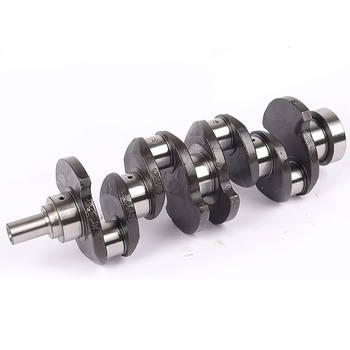
Understanding the Crankshaft's Role
The crankshaft is the backbone of your engine. It converts the linear motion of the pistons into rotational motion, which ultimately powers the wheels. This complex component endures tremendous stress and wear. A damaged crankshaft can disrupt this crucial process, leading to significant engine problems.
Why a Bad Crankshaft Prevents Starting
A severely damaged crankshaft can seize the engine entirely. This means the engine won't turn over at all. Even attempting to start the car can cause further damage. So, if you suspect a bad crankshaft, avoid repeatedly trying to start the car. Think of it like trying to turn a rusty gear; forcing it will only make things worse. Will a car start with a bad crankshaft that's only slightly damaged? Perhaps, but it’s unlikely to run smoothly, and continuing to drive with a damaged crankshaft can lead to catastrophic engine failure.
Recognizing the Symptoms of a Bad Crankshaft
Several symptoms might indicate a failing crankshaft. These include loud knocking noises from the engine, low oil pressure, and vibrations felt through the car's chassis. Another key indicator is difficulty starting the engine, or the engine stalling frequently. Have you noticed any of these symptoms? If so, it's crucial to get your car inspected by a professional mechanic immediately.
Diagnosing Crankshaft Problems: Car Crankshaft Problems
Diagnosing a bad crankshaft often involves a thorough inspection by a mechanic. They might use specialized tools to measure crankshaft endplay or check for bearing wear. In some cases, they may need to remove the oil pan to inspect the crankshaft visually. This inspection allows them to determine the extent of the damage and recommend the necessary repairs.
What Causes Crankshaft Failure?
Crankshaft failure can result from several factors. Lack of lubrication due to low oil levels is a primary culprit. Excessive engine wear and tear can also contribute to crankshaft problems. Additionally, a spun bearing can put immense stress on the crankshaft, leading to potential failure. Recognizing these factors can help you take preventative measures to protect your engine.
Repairing or Replacing a Bad Crankshaft: Crankshaft Failure
Repairing a crankshaft is often complex and costly. In many cases, a complete engine rebuild or replacement might be the most practical solution. The severity of the damage and the age of the vehicle will factor into this decision. A mechanic can provide an accurate assessment and recommend the best course of action.
The Cost of Crankshaft Repairs
The cost of repairing or replacing a crankshaft can range from several hundred to several thousand dollars depending on the make and model of your vehicle and the extent of the damage. This is not a small repair, which is why addressing potential issues early, before they escalate into crankshaft failure, is vital.
Preventing Future Crankshaft Issues
Regular oil changes and proper engine maintenance are crucial for preventing crankshaft problems. Maintaining the correct oil level and using the recommended oil type for your vehicle can significantly extend the life of your crankshaft and prevent costly repairs. Addressing unusual engine noises or vibrations promptly can also help prevent minor issues from becoming major problems.
Next Steps: What Should You Do?
If you suspect your car has a bad crankshaft, don’t attempt to drive it. Continuing to drive with a damaged crankshaft can worsen the problem and lead to catastrophic engine failure. Instead, have your car towed to a qualified mechanic for a proper diagnosis. They can assess the damage and advise on the best course of action. Will a car start with a bad crankshaft? As we've explored, the answer is usually no. Taking proactive steps to maintain your vehicle and address potential issues early is crucial for avoiding this expensive and inconvenient problem.

 The Unseen Powerhouse: Unveili
The Unseen Powerhouse: Unveili
 Unveiling the Precision: The A
Unveiling the Precision: The A
 Navigating the World of Cranks
Navigating the World of Cranks
 The Unsung Heroes: What Makes
The Unsung Heroes: What Makes
